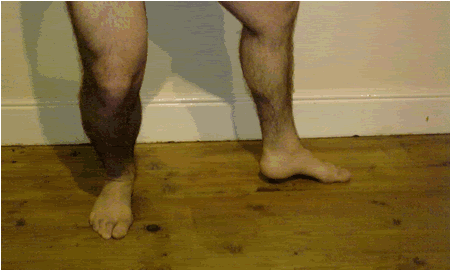Moving forward in hugul ja sae can be a pain. A
real pain (in the legs)! Of course when executing kicking techniques progressing forwards is a cinche but quite often (in our dojang) Master Campbell will have us marching up and down in back stance punching and blocking without kicking (or sometimes even foojin) ... Moving forward in hugul ja sae requires a bit of attention to keep form, so this is what works for me...
From back stance, pivot on the balls of the feet (you needn't raise the heels off the floor, simply pivot). As you pivot the feet your shoulders square off and you transfer the weight to the front foot; then you can step forward. In Korean style I place the new front foot down onto the ball of the foot facing inwards slightly in order to get a twist on the hips for technique.
Japanese back stance is much longer and more evenly balanced: more like 60%/40% rather than a Korean 70%/30% so I'm not sure if there is a better way of processing this movement.



Thanks for responding to my question about back stance.
ReplyDeleteMarching up and down in back stance - that's sadism! Still our sensei has us marching up and down in shiko dachi (horse stance) which is not much better.
Judging by your description and the photos your back stance is much shorter than ours. We are actually taught to put the heel down first when stepping forward into back stance. But with the wide stance and the 60/40 weight distribution it is almost impossible for me to kick with the front leg. I'd also be vulnerable to having my front leg swept from under me. So I don't really see the purpose of the japanese back stance - your's sounds much more sensible. If I needed to have my weight back so I could kick off the front leg I would choose nekoashi dachi (cat stance).
Thanks for this post - it's interesting to see how things are done in other styles.